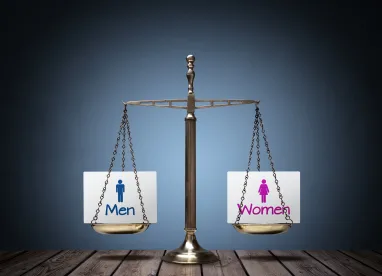Short Answer: Currently, no. But first, some background.
Generally, employers with 100 or more employees, and certain federal contractors and subcontractors, are required to file an Employer Information Report EEO-1 each year. The EEO-1 is a report of the employer’s work force by job category, sex, race, and ethnicity. In 2016, then-President Obama announced a plan to use the EEO-1 to assist in ending the gender wage gap.
To that end, on February 1, 2016, the EEOC published a notice announcing its intention to seek a three-year approval from the Office of Management and Budget (OMB) for a “revised Employer Information Report (EEO-1) data collection.” Under the proposal, the revised EEO-1 would now contain a “Component 2,” which would include employees’ W-2 earnings, as well as hours worked information for employees covered by the EEO-1. The data was to be reported in an aggregated fashion into 12 pay bands for the 10 EEO-1 job categories.
OMB approved the proposed modification and collection of pay data on the EEO-1 on September 29, 2016. The first report of data was to begin with the 2017 reporting cycle, with respondents to file their reports by March 31, 2018. However, on August 29, 2017, the Trump White House froze these new EEO-1 requirements for a re-evaluation of the burden the new requirements would have on employers, and an analysis of whether such a burden was justified by the information that would be obtained.
Approximately two months later, the National Women’s Law Center and the Labor Counsel for Latin American Advancement sued the OMB, seeking to have the decision to freeze the new EEO-1 implementation reversed and to force the EEOC to collect the wage and pay data that was otherwise required by the new EEO-1 form.
In a decision published earlier this month, Judge Tanya Chutkan of the U.S. District Court for the District of Columbia agreed and ordered the EEOC to reimplement the revised EEO-1 collection process.
Now the question is: Can the EEOC get the tools in place to implement the new EEO-1 collection process, and will employers be required to comply?
The current EEO-1 reporting site for the 2018 calendar year opened on Monday, March 18, collecting Component 1 data (the normal gender, race and ethnicity data), and is scheduled to close on May 31.
However, by March 18, approximately two weeks after the court’s ruling, there had still been no word from the OMB (and the EEOC) on collection efforts associated with Component 2: the wage and hours data (this portal on the site is still not active). Therefore, on March 19, 2019, Judge Chutkan ordered the EEOC to submit a brief explaining the slow pace of compliance with the court’s order.
For now, employers are simply incapable of submitting the pay data on the revised EEO-1: there is no means to do so on the EEO-1 portal. And pundits doubt that the EEOC will have the tools in place to commence such collections by May 31, the date on which the portal closes. Therefore, it is quite likely that the May 31 deadline will be extended, or the wage and hours reporting obligation may be stayed altogether, while the EEOC and OMB appeal the court’s order.
Stay tuned – we will let you know as soon as a decision or implementation begins!




 />i
/>i

